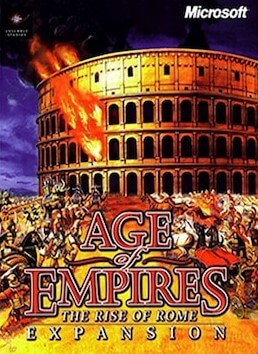The two sides have completely unique units and strategies, unlike many contemporary games. Freedom Guard units are characterized as being weaker but more mobile, being faster and better able to handle difficult terrain. As such, these units specialize in lightning strikes and ambushes and are useful in harassing enemy units and supply lines. Imperium units rely on strength and numbers to overwhelm their enemies. Although their units are usually slower when compared to Freedom Guard counterparts, they are able to outmatch Freedom Guard units with increased armor and firepower. Furthermore, Imperium units have a greater reliance on hover technology, which limits their use in extreme terrain but allows them to easily cross natural water barriers. Freedom Guard technology relies on hiding their units through use of technology called phasing. Phasing allows units to quickly hide underground, making them effective for close-quarters ambushes. The Imperium are directed more towards a blitzkrieg style of play, with units focused on supremacy in combat ahead of tactical flexibility. Freedom Guard units are geared more towards an anti-armor role, especially to counter Imperium armor superiority, while the Imperium utilize more anti-infantry weapons to negate Freedom Guard infantry advantages.
Players can steal technology from other players, thus negating specific unit advantages and specialty. In order to do this, the player uses an espionage unit called the Infiltrator to steal weapon designs from an enemy Headquarters, the building tasked with producing construction rigs. Once the plans have been successfully stolen, the infiltrator unit is then directed back to the player's HQ to incorporate the new technology in their production options. The Infiltrator may steal as many weapon designs as possible while in the enemy headquarters but risks being exposed the longer the unit stays.
In the campaign missions, the player is given a number of objectives that must be met before victory can be achieved. These victory conditions follow the historical scenario being replayed - for example, a given mission might require the player, as the Freedom Guard, to evacuate or protect a particular unit or structure, or as the Imperium, to destroy those units or prevent their escape.
Dark Reign possesses a complex fog-of-war where line of sight is affected by varying terrain height and shape. This allows for the use of forests for ambushes and limits the effectiveness of recon in densely forested or mountainous areas. Like many RTS titles, structures in the game consume power and do not function if sufficient power is unavailable. Players can 'power down' buildings to keep their bases online, giving greater flexibility in base management. The game also features production queues, and where multiple production facilities of the same type exist, they automatically divide up production, or can be ordered to each focus on particular production queues.
A player can place any number of paths, each with any number of points, and save each one with a unique name. Units on a path can be assigned to patrol it, loop, or travel to it once, and units automatically carry out behaviours at each point - for example, a resource collector can be given a path to take it around an enemy base to a water deposit and it will treat this route as its standard resource gathering path. Separate from waypoints, units can be given individual orders such as "search and destroy", "harass", or "scout", allowing them to choose their own targets, engaging and occupying the enemy while freeing up the player to work on more significant strategies or development. These tactics can be controlled further with the use of individually customisable AI settings for every unit, allowing the player to set unit pursuit range, damage tolerance (how quickly the unit will seek healing / repairs and flee combat), and independence (how far the unit will stray from orders in order to engage attackers or targets of opportunity). These can be set individually for every unit, and the default setting can be changed, eliminating the need to change every unit if a unified strategy calls for particular settings.
Plot
The game takes place in the distant future. The player takes the role of a survivor of a faction of humans known as the Tograns, whose society was decimated after their homeworld became engulfed in the civil war between the Freedom Guard and the Imperium (who were once both the Sprawlers and the Jovian Detention Authority (JDA) from Dark Reign 2 respectively). As one of the last remaining Tograns that set off in hopes they might find a new refuge to rebuild and carry on the words of Alpheus Togra (a famous research scientist and philosopher), the player is presented with an opportunity to go back through time and prevent the death of the founder, Togra, using an advanced probe launched by him just prior to the destruction of the planet Strata-7. To use the device, the player must first demonstrate their worth by achieving victory in simulations of famous battles between the Imperium and the Freedom Guard.

















